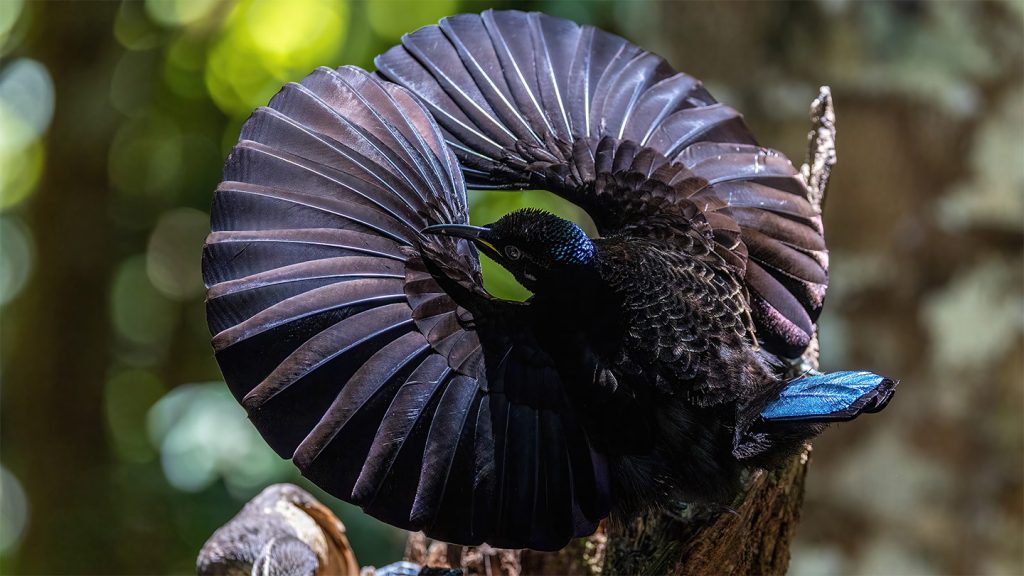Male riflebirds, known for their courtship displays, use their beaks to play their feathers like an instrument, creating loud percussion sounds. Previously thought to clap their wings, research now shows that the beak hits fanned out feathers as the male swings his head, closing and opening his beak in the process. This behavior was observed in a male Victoria’s riflebird and confirmed in other species of riflebirds. The extreme flexibility of the male riflebird’s wrist allows for the curved arc of feathers that creates the visual spectacle during courtship displays.
The wrist flexibility of the riflebirds is unique and allows for the striking arc of feathers that the beak drums against. This is achieved through the wrist joint, which is bent to an angle of up to 237.1 degrees in a dead specimen of a Victoria’s riflebird. Other species of riflebirds exhibit similar wrist flexibility. This extreme flexibility is likened to a bodybuilder flexing and is a remarkable adaptation that sets riflebirds apart from other birds. The synchronized movements of head swaying, beak opening and closing, and wrist flexing create the dazzling courtship displays that female riflebirds find attractive.
The courtship behavior of male riflebirds involves a high-energy and noisy display intended to impress female birds. The males have the most flexible wrist joints ever measured in a bird, allowing them to curve their wings like a flaring cape. The beak movements, as seen in slow-motion videos, add flashes of gold from the mouth and throat lining. This beak scraping over the spread feathers creates the distinctive thwacking sounds that accompany their displays. The unique combination of visual and auditory signals makes riflebirds stand out among bird species in terms of courtship displays.
Researchers have recently captured new footage of male riflebirds in action, shedding light on how they create the loud percussion sounds during their courtship displays. The observations suggest that male riflebirds use their beaks to play their feathers like an instrument, producing short, sharp thwacking sounds. This behavior is unique to riflebirds and showcases the remarkable physical adaptations and behaviors that have evolved in these birds. Further research and study are necessary to fully understand the complexity and importance of these dazzling courtship displays in riflebirds.


